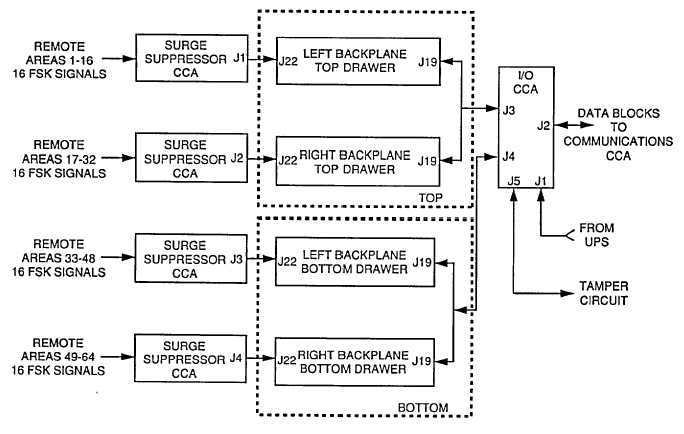TM 5-6350-280-23&P
SECTION III PRINCIPLES OF OPERATION
1.13 FUNCTIONAL DESCRIPTION.
The AMG (figure 1-4) requires a computer to monitor remote areas protected by the J-SIIDS. The UPS is used to provide
a minimum of 4 hours standby power should the monitor facility lose its ac power. The UPS is connected to the
applicable ac power source (100, 120, 230, or 240 Vac at either 50 or 60 Hz). The UPS provides its 120 Vac output
power at 60 Hz to the CMA and computer. The CMA receives the data signals from up to 64 remote areas. Each data
signal is transmitted from a remote area by the J-SIIDS Data Transmitter for up to 10 miles over a dedicated telephone
line pair or a 600-ohm balanced transmission line pair. Each line pair is connected to the CMA. The CMA demodulates
the data signals and sends the resulting data to the Communications CCA installed in the computer. The application
software instructs the computer to process the data from the Communications CCA and to update the status information
displayed on the color monitor. When the application software processes a status change, it alerts the operator with an
audible tone and flashing status indicators. The following paragraphs provide a more detailed description of the AMG and
computer.
1.13.1 J-SIIDS Functional Description. The J-SIIDS physical security system monitors the status of various remote
areas and provides the status to the operations center for physical security. The J-SIIDS data transmitter generates an
FSK signal that contains the encoded status of each area. The two tones employed in the FSK signal are 1070 Hz and
1270 Hz. The data transfer rate of the FSK signal is 12 Hz. The
Figure 1-5. CMA Block Diagram.
1-8

